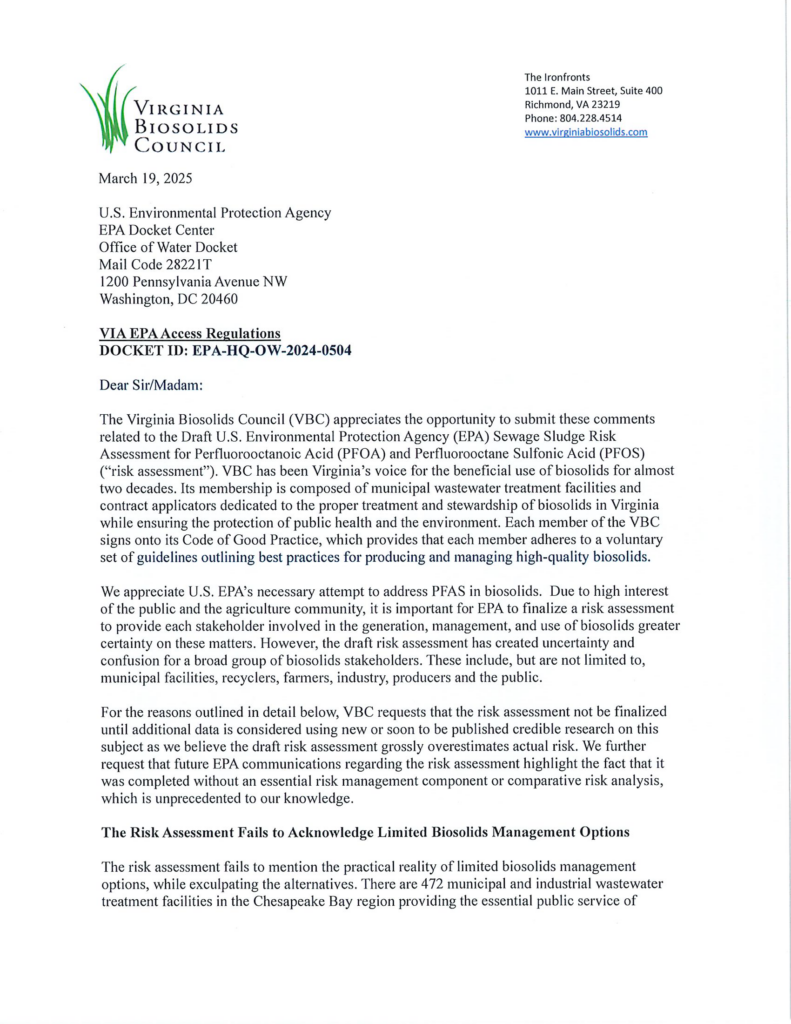The Virginia Biosolids Council has drafted comments to be submitted and considered by the EPA regarding the released draft risk assessment for Perfluorooctanoic Acid (PFOA) and Perfluorooctane Sulfonic Acid (PFOS) in January 2025.
Biosolids are currently applied to about 36,716 acres in Virginia or less than 1% of the 7.3 million acres of farmland in Virginia and regulated by the Virginia Department of Environmental Quality.
The Virginia Biosolids Council (VBC) appreciates the opportunity to submit these comments related to the Draft U.S. Environmental Protection Agency (EPA) Sewage Sludge Risk Assessment for Perfluorooctanoic Acid (PFOA) and Perfluorooctane Sulfonic Acid (PFOS) (“risk assessment”). VBC has been Virginia’s voice for the beneficial use of biosolids for almost two decades. Its membership is composed of municipal wastewater treatment facilities and contract applicators dedicated to the proper treatment and stewardship of biosolids in Virginia while ensuring the protection of public health and the environment. Each member of the VBC signs onto its Code of Good Practice, which provides that each member adheres to a voluntary set of guidelines outlining best practices for producing and managing high-quality biosolids.
We appreciate U.S. EPA’s necessary attempt to address PFAS in biosolids. Due to high interest of the public and the agriculture community, it is important for EPA to finalize a risk assessment to provide each stakeholder involved in the generation, management, and use of biosolids greater certainty on these matters. However, the draft risk assessment has created uncertainty and confusion for a broad group of biosolids stakeholders. These include, but are not limited to, municipal facilities, recyclers, farmers, industry, producers and the public.
For the reasons outlined in detail below, VBC requests that the risk assessment not be finalized until additional data is considered using new or soon to be published credible research on this subject as we believe the draft risk assessment grossly overestimates actual risk. We further request that future EPA communications regarding the risk assessment highlight the fact that it was completed without an essential risk management component or comparative risk analysis, which is unprecedented to our knowledge.
You may read the full comment letter from VBC regarding the EPA risk assessment.
You may read the Code of Good Practice to which all VBC members are committed.
